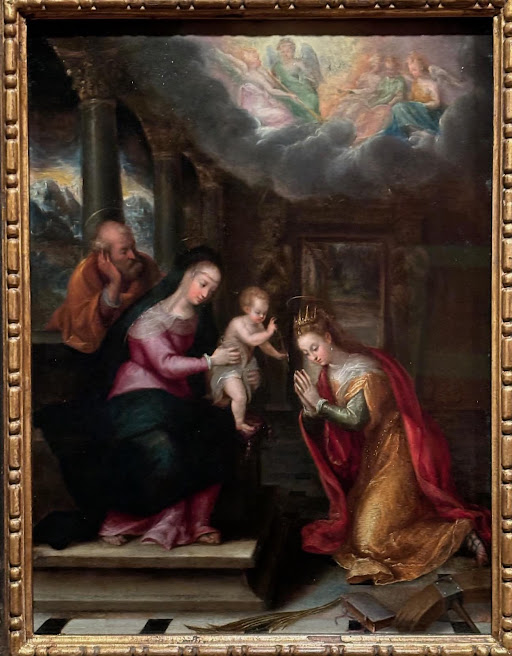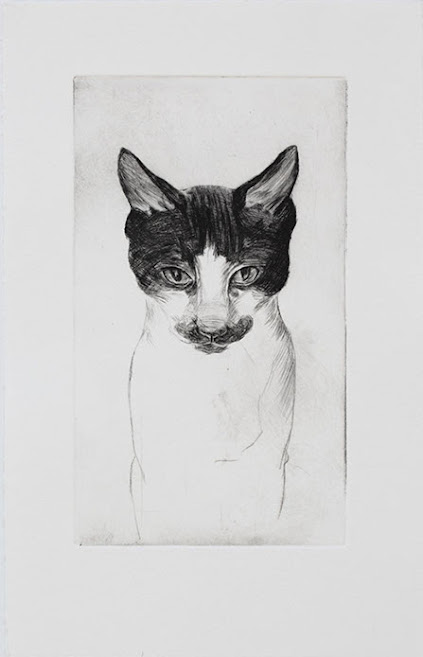SHANE JONES ART BLOG
Monday, April 8, 2024
Emerging from Darkness
Tuesday, April 2, 2024
Watch This
WATCH THIS is a theatre company that my partner, Deborah Klein, and I are patrons. Modest patrons, but patrons nevertheless. Recently we had a fund raiser for the next production, which is in 2025, but is still a secret at this time. It will be a Stephen Sondheim musical because it's only his musicals that WATCH THIS performs.
It was a fun night, with Nick Simpson-Deeks as MC, not only is he one of the star performers of WATCH THIS but a major talent in Australian musical theatre. His MC duties were hosting a quiz show about things relating to Sondheim and his musicals. Tough questions were mixed with easier ones but it was a testing evening just the same. There were about 10 teams of various numbers and our team ended around the middle of the field so to speak.
Nick Simpson-Deeks designed the screen shot silhouette of Sondheim and also devised what questions we would be asked.
Our team, from left - Phillip, Myself, Deborah Klein and Stephan McLauchlan. In the centre is Sonya Suares, founder of WATCH THIS. What a legacy Sonya has created, a may this wonderful theatre company continue for a long time into the future. Sonya was in a rival team but there was so much merriment and wit, it was like a theatrical event!
All photos were by Deborah Klein except the last one which I can't recall who took it.
Saturday, March 30, 2024
The Music Room
Thursday, March 21, 2024
A Breeze on the Water
Monday, March 11, 2024
Moonrise in the Gloaming

Thursday, January 25, 2024
Art and the Occult
This is a fantastic book about the meaning of Art. We've all heard it said many times that no-one knows what art is and therefore it cannot be defined but Art and the Occult considers the qualities that are inherent in great art. For Schwartz the spiritual/occult presence within art is what causes it to be of lasting value, mainly because those same qualities are within human beings.
I was particularly interested in his discussion about El Greco, Goya, Rembrandt and Ingres. For Schwartz, El Greco reigns supreme because his work is pure spirit in contrast to Goya and Rembrandt whose work is almost on that level but not quite. His 'grading' of Ingres to a much lower level is because he painted primarily the physical body and although it's a living body, the body is the main focus of the work rather than the spirit that animates it.
He also discusses the Tarrot and other mystical practices but these don't interest me at all. His emphasis is on Art and how artists shaped the history of Art because of their ability to express the spiritual light- energy that animates the world we live in.
It's an absorbing discussion, whether you agree with Schwartz or not, but much of what he writes makes sense and the way he locates the spiritual behind the medium in art is a very interesting read.
Tuesday, January 23, 2024
Thunderclap
Sunday, January 14, 2024
Self Portrait in a Black Shirt
Tuesday, January 2, 2024
Animals in My Art
When I was much younger I always drew horses, mainly racehorses, so perhaps it makes sense that I occasionally paint other animals. One of my favourite paintings of animals is Carel Fabrituis' The Goldfinch (below) which inspired my canary images. As the paintings show, I felt inclined at the time to do a variation on the same animal. Sometimes, one just isn't enough.
One of the challenges in painting animals is to give them a personality since all animals have their own individuality, which is especially obvious if you have a pet or spend some time around an animal.
All the paintings were done from actual specimens except the horse, which is based on a photograph. The drypoint was done from the top painting 6 years later.

Wednesday, December 27, 2023
Wunderkammer?
The Wunderkammer, or German for wonder-room, was the 16th Century precursor to the museums we know today. Collections could inhabit a room but also be confined to a cabinet, which lead to its other name as a Cabinet of Curiosities. Wunderkammers were established by people of rank to showcase their place in society or others created by scholars and scientists for study. An entertainment aspect could be present as some of the specimens were not seen by most people and therefore a specimen could have an exotic value because of its rarity. In all cases, the emphasis was on the object itself as deserving of study and appreciation.
My Wunderkammer? work probes something different. We have all heard about the spiritual behind created things, but perceiving the spiritual and observing the material demand different types of vision. As Christ told us, the kingdom of God will not be known through observation, which means there must be another faculty within us to perceive the spiritual behind things. William Blake tells us that there is no such thing as separate body and soul, but rather that they are the same thing. Spinoza tells us that the body and soul are the same thing expressed in two different ways.
This work is a response to the material/spiritual presence we always experience. The question mark of the title is there to question the world of appearances and the colour white was used as an attempt to create a ghost/spiritual object but still be one with its material reality by the thickness of the paint. In this way, two kinds of reality exist at the same time. That is my aim!
The pics below show the Wunderkammer? installation consisting of small paintings and balsa wood models painted with artist's oil prime. I adopted a different palette from what I usually use so for these paintings I used Flake White, Ivory Black, Vermillion and Yellow Ochre. Usually, my choice of colours is white with the three cool primary colours and three warm primary colours - Flake White, Winsor Yellow, Cadmium Yellow Deep, Alizarin Crimson Permanent, Cadmuim Red Deep, French Ultramarine Deep and Cobalt Blue.
Thursday, December 21, 2023
The Christmas Tree
The thing I like most about Christmas is our Christmas Tree. Deborah and I have been gathering Christmas decorations from around the world for decades. We actually have two trees, one is relatively large and the other one is quite small. These pics speak for themselves. Enjoy the sumptuous decorations designed and made by so many throughout the world.





























































